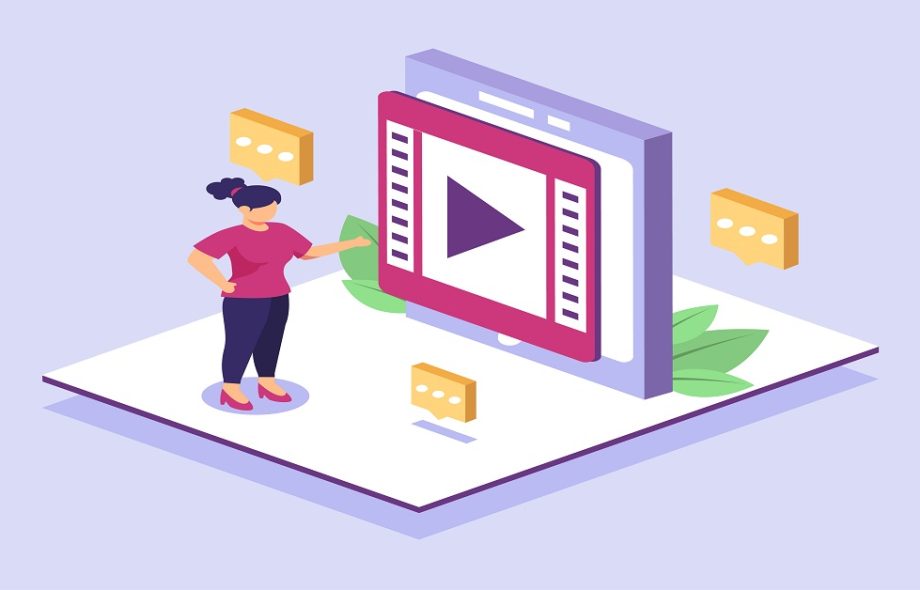In today’s world, video content is king. From social media influencers to businesses creating marketing material, video editing has become an essential part of the content creation process. As mobile technology continues to evolve, video editing apps are now expected to work seamlessly across multiple platforms. Whether on iOS, Android, or even desktop operating systems like Windows and macOS, developers face the challenge of creating apps that perform consistently across these diverse environments.
Building cross-platform video editing apps can be a daunting task due to the varying specifications and demands of each platform. However, with the right frameworks, tools, and strategies, developers can streamline their efforts and deliver an experience that meets user expectations. In this guide, we’ll explore some of the best tools and frameworks to help developers create cross-platform video editing apps with a focus on performance, user experience, and scalability.
1. Why Cross-Platform Development Matters for Video Editing Apps
Cross-platform app development refers to the practice of writing code once and deploying it on multiple platforms—typically iOS, Android, and web. This approach saves both time and cost compared to developing separate native apps for each platform. It also ensures that the app reaches a wider audience, improving its adoption rate.
For video editor app development, cross-platform development makes even more sense, as it allows developers to optimize resource usage and unify the user experience. Instead of rewriting the entire application for each platform, developers can focus on one codebase, speeding up development and reducing the chances of errors.
2. Popular Frameworks for Building Cross-Platform Video Editing Apps
When it comes to choosing the right framework, there are several options available. Let’s explore some of the most popular choices for building cross-platform video editing apps:
Flutter:
Flutter, a framework developed by Google, has become increasingly popular due to its performance and flexibility. Written in Dart, Flutter allows developers to build natively compiled applications for mobile, web, and desktop with a single codebase.
Why Flutter for Video Editing Apps?
• Performance: Flutter’s performance is near-native, which is crucial for video editing apps where real-time rendering and smooth playback are necessary.
• Rich UI Components: Flutter offers a wide variety of pre-built UI widgets and customizability, making it easier to create an intuitive and visually appealing interface.
• Cross-Platform: With Flutter, developers can target multiple platforms without worrying about platform-specific quirks or rewriting large parts of their codebase.
However, for resource-heavy tasks like video editing, Flutter may require integration with lower-level native code to achieve optimal performance.
React Native:
React Native, developed by Facebook, is another popular framework for building cross-platform apps. It allows developers to write code in JavaScript and render native UI components.
Why React Native for Video Editing Apps?
• Reusable Code: React Native allows for code reuse between platforms, making it efficient for developers working on large-scale applications.
• Vast Ecosystem: The framework has a large community, which means a wide range of plugins and libraries are available. You can easily integrate third-party tools for video processing and editing functionalities.
• Native Modules: React Native allows you to write native code for performance-critical sections of your video editing app, giving you the flexibility to optimize rendering and processing.
While React Native offers significant advantages, it may not be ideal for apps requiring heavy multimedia processing, as video editing can be very resource-intensive.
Xamarin:
Xamarin, a framework powered by Microsoft, allows developers to build cross-platform apps using C#. Xamarin compiles to native code for both iOS and Android, making it a viable option for performance-driven apps like video editors.
Why Xamarin for Video Editing Apps?
• Native Performance: Xamarin provides access to native APIs, ensuring that your app has the same performance as a fully native application.
• Single Codebase: With Xamarin, you can share most of your codebase across platforms, reducing development time and complexity.
• Integration with .NET Libraries: Xamarin is tightly integrated with the .NET ecosystem, making it easier to handle complex tasks such as video processing, storage management, and more.
Xamarin’s steep learning curve may deter new developers, but it’s a powerful framework for those familiar with C# and Microsoft’s development tools.
3. Key Tools for Video Processing and Editing
Video editing apps need to handle complex multimedia tasks. To make this possible, you’ll need third-party libraries and tools to assist with video processing. Below are some of the key tools that can help enhance the functionality of your cross-platform video editing app:
FFmpeg:
FFmpeg is an open-source tool that is widely used for video and audio processing. It supports almost every video format and codec, making it an essential tool for any video editing app.
Why FFmpeg?
• Versatility: FFmpeg can handle a wide range of tasks, from transcoding video formats to extracting metadata and adding special effects.
• Cross-Platform: FFmpeg is available on all major platforms, so it integrates well with cross-platform development frameworks like React Native and Flutter.
• Performance: FFmpeg is highly optimized for performance and can handle large video files without crashing.
You can integrate FFmpeg into your app using native modules or through platform-specific bindings, depending on your chosen framework.
OpenCV:
For developers focusing on advanced video editing features like motion tracking, face recognition, or visual effects, OpenCV is an indispensable tool. Originally designed for computer vision applications, OpenCV can be used to manipulate video frames, apply filters, and track objects.
Why OpenCV?
• Computer Vision Capabilities: OpenCV’s rich set of image-processing functions can be utilized for creative effects, such as applying real-time filters or detecting objects within the video.
• Cross-Platform Support: OpenCV works well with various cross-platform frameworks like React Native and Flutter, giving your app the ability to perform advanced editing tasks across all platforms.
GPU Acceleration
Video rendering and processing can be resource-intensive, and a significant performance boost can be achieved by offloading tasks to the GPU. Many cross-platform frameworks support GPU acceleration through libraries such as Metal (iOS) or Vulkan (Android).
Why GPU Acceleration?
• Improved Performance: By utilizing the GPU for video rendering and processing, you can significantly improve the speed and responsiveness of your app.
• Real-Time Editing: GPU acceleration is critical for providing real-time video playback and processing, especially when handling large video files or applying complex effects.
4. Best Practices for Cross-Platform Video Editing Apps
• Optimize for Performance: Video editing can be resource-heavy, so it’s essential to optimize the app for performance. Use efficient algorithms, minimize memory usage, and take advantage of multi-threading and GPU acceleration.
• Ensure Consistency Across Platforms: Although you’re using a cross-platform framework, the user experience should feel consistent across all platforms. Test the app on various devices to ensure a smooth experience.
• User-Centric Design: Video editing apps are complex, so it’s essential to create an intuitive and easy-to-navigate interface. Consider building tutorials or user guides to assist beginners.
Conclusion:
Building a cross-platform Develop An AI Video Editing App requires a strategic approach to ensure both high performance and a smooth user experience. Choosing the right framework—whether Flutter, React Native, or Xamarin—will depend on your specific requirements and familiarity with the tools. By integrating powerful multimedia tools like FFmpeg, OpenCV, and GPU acceleration, developers can create feature-rich video editing apps that work seamlessly across platforms.
 :
https://in.pinterest.com/devtechnosys/_created/
:
https://in.pinterest.com/devtechnosys/_created/

